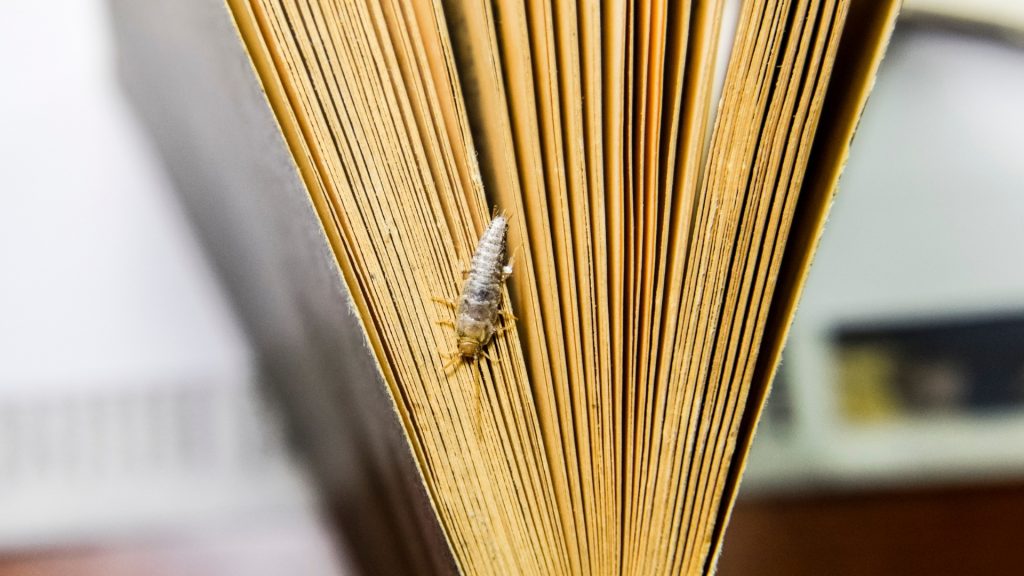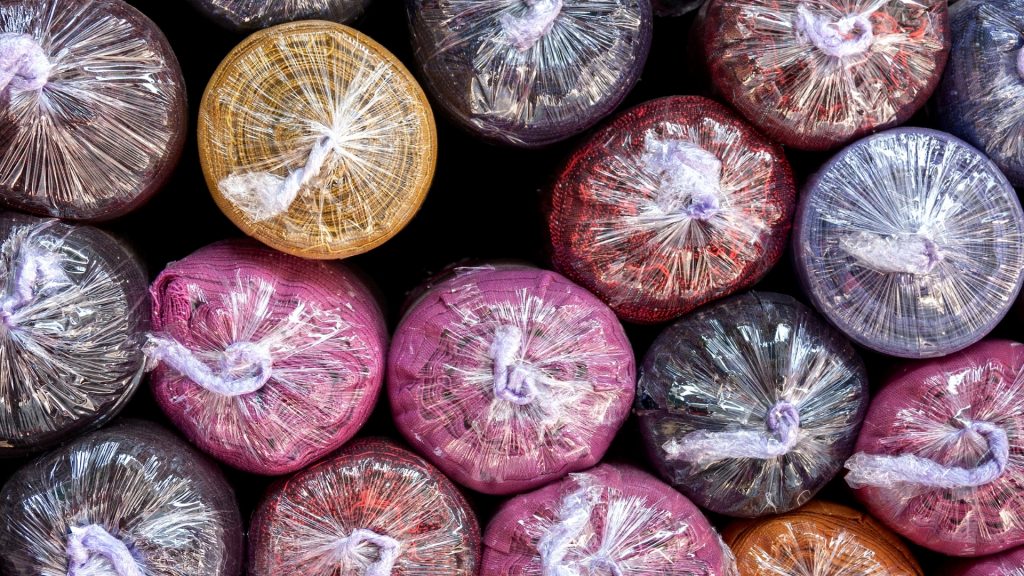Silverfish love to sneak around your house at night and stay hidden throughout the day. They usually go out only to eat and return to their den after. These insects are typically found in the basement, attic, and other parts of your house where it’s humid and dark. Thus, it can be pretty hard to get rid of them.
However, if you know what they consume to survive, you’ve got the leverage to kick them out of your property. You can cut off the food sources right away and solve the problem.
What do silverfish eat? Silverfish typically eat books, documents, bookbinders, glue, paper, different types of fabrics, and toiletries. Starches and protein-rich foods like vegetables, grains, sugars, and fibers are also their favorites. They can eat various materials and enter homes in search of food.
In this article, we’ll discuss the things that silverfish eat. This article will also explain whether they are troublesome and how to get rid of them.
Things That Silverfish Eat
Silverfish do not bite or transfer disease to humans. However, they are troublesome because they eat a variety of foods, preferring paper-based items, fabrics, and protein-rich foods.
Knowing what silverfish eat is critical for cutting off their food sources and eliminating the problem. Below, you may see a list of what they might consume in your house.
Paper-Based Items

Silverfish need starch in their diet, which is why they like to consume paper. They prefer older paper because it has a higher starch content and is easier to digest. Furthermore, because the glue used for bookbinding contains a lot of starch, they can’t also say no to it.
That is why silverfish are commonly seen in people’s houses’ libraries. Not only giving them easy access to some of their favorite meals, but it also providing them with ideal hiding spots when it’s time to sleep, mate, or avoid the light that silverfish dislike.
As a result, if these objects are not handled properly, you may get silverfish infestation.
Ways to Manage Silverfish in Your Books
You may consider the following ways in your place to manage the existence of silverfish when you suspect an infestation in your books:
- If under suspicion of a silverfish infestation, keep repellent items such as lavender-scented things and cedar wood chips.
- Inspect your books. If you find out that only a few books were infested, place them in a plastic bag and the freezer after. This will exterminate the hidden silverfish in various pages. Ensure the books are dry completely before putting them back on your bookshelf.
- Avoid storing paper-based items in humid, dark spaces of your home, like in the attic and basement.
- If you’re using wallpapers, make sure to turn on the fan, air conditioner, or humidifier each time the humidity level is high. This will keep your space safe from the intrusion of silverfish.
Fabrics

Unfortunately, silverfish have a strong preference for fabrics. They are attracted to a variety of fabrics such as:
- Cotton
- Linen
- Silk
- Wool
- Rayon
Silverfish like consuming the polysaccharide in these fabrics, making costume stores, attics, and closets an attractive place to them. If those fabrics are not available, silverfish have been known to consume leather and synthetic materials.
You should consider putting fabrics in a sealed plastic bag before placing them in a specific place. If you’re not into sealing your clothes in plastic, make sure to store them in a place away from any moisture and humidity.
Protein-Rich Foods

When it comes to food, silverfish are also attracted to the following:
- Rice
- Flour
- Cereal
- Vegetables
- Pet food
Silverfish can get into your house through a container containing one of these commodities. If they do, you may find yourself dealing with an infestation. Thus, it’s crucial to stock your foods in tightly covered containers to avoid food contamination.
Toiletries

The bathroom is one of the numerous areas in your home where silverfish prefer to hang out. One explanation for this is that it has a lot of moisture, which silverfish prefer.
Besides, bathrooms provide room for the food of silverfish such as:
- Soap
- Shampoo
- Conditioner
- Toothpaste
- Lotion
Silverfish consumed these products because of the presence of polysaccharides. Polysaccharides are used to enhance the consistency of a variety of toiletries and cosmetics. It is sugar that is irresistible to silverfish.
Thus, it would be beneficial to have an exhaust fan placed in your bathroom to air out space after taking your shower. This will help dry out your bathroom quickly.
Are Silverfish Troublesome?
Silverfish are troublesome. Though they don’t cause any harm to humans, they can damage your paper-based belongings and fabrics.
Apart from they can ruin your things, they can also be nuisances in the following ways:
- They shed their skins in your stuff.
- Eat your paper-based items, such as wallpapers, books, money, and other things that contain starch.
- They can leave their droppings on your open food items like cereals, which can contaminate your foods.
- Encourage the growth of mold with their droppings.
- They can attract other pests worse than them, such as termites and beetles.
- With their shed skins, they can also cause allergies in certain people.
Thus, it’s quintessential to get rid of them. If you know what the silverfish consume, it can help in getting rid of the infestation quickly.
Ways to Eliminate Silverfish
When it comes to eliminating silverfish, there are various ways to do that. You may use the following method:
The Natural Method

The natural method involves using household items containing scents that naturally repel silverfish. These items are the following:
- Spices
- Citrusy scents
- Floral scents (e.g., lavender)
- Herby scents (e.g., peppermint)
You can place any pouches of these items near your books and in the entry of your house. If you’re opting to use spices and herbs, slightly press them to release their natural scent.
The Application of Chemical
When you have silverfish sightings, you may use commercial pesticides. However, a careful application should always be observed to avoid harm to your pets and children.
- You may either choose from spray pesticide or . These may be used in nooks and crannies of your home, as well as the openings.
- You can also set up a paper and jar with baits and blend them with Boric acid , Diatomaceous earth (DE) , or other chemicals. However, this can be dangerous if you have roaming pets and children in the house.
If you opt to use chemicals, make sure to read the manufacturer’s instructions for the safety of everyone.
Hiring a Professional Pest Exterminator
Another way you can eliminate silverfish is by hiring a professional pest exterminator. They know various effective methods to use based on the gravity of infestation.
Thus, leaving the pest work to the professionals can be the best thing you can do for your home. They’ll help you achieve silverfish-free spaces that make your home more pleasant to live in and make reading time more precious.

Related: How To Get Rid of Silverfish? | Top 11 Silverfish Repellents
Summary
Silverfish do not pose a threat to human health and do not transmit diseases.
But if they reproduce in large numbers, they may eat valuable possessions and generally be a nuisance. They may infest your books, documents, bookbinders, paper, various fabrics, protein-rich food, and toiletries, so you’ll want to get rid of them as soon as possible.
Silverfish can be removed using either a natural approach or a commercial pesticide. However, if you use pesticides, make sure to apply them carefully to avoid contamination. You may also contact a professional pest exterminator because they are familiar with numerous efficient methods in eliminating them, depending on the severity of the infestation.
List of Sources
Shetlar, D. J., Andon, J. E. (2015). Silverfish and Firebrats. The Ohio State University.
Brown, W. Silverfish and Firebrats. Texas A&M Agrilife Extension.
Jacobs, S. (2017). Bristletails (Silverfish and Firebrats). Penn State Extension.
Gillett-Kaufman, J. L., Phillips, E. F. (2018). Silverfish – Lepisma saccharina. University of Florida.
- How to Get Rid of Copperheads | Practical Guide - August 27, 2023
- How to Get Rid of Corn Snakes | What Makes Them Aggressive? - August 27, 2023
- How to Get Rid of Alligators | Safety Measures and Removal Methods - July 16, 2023
